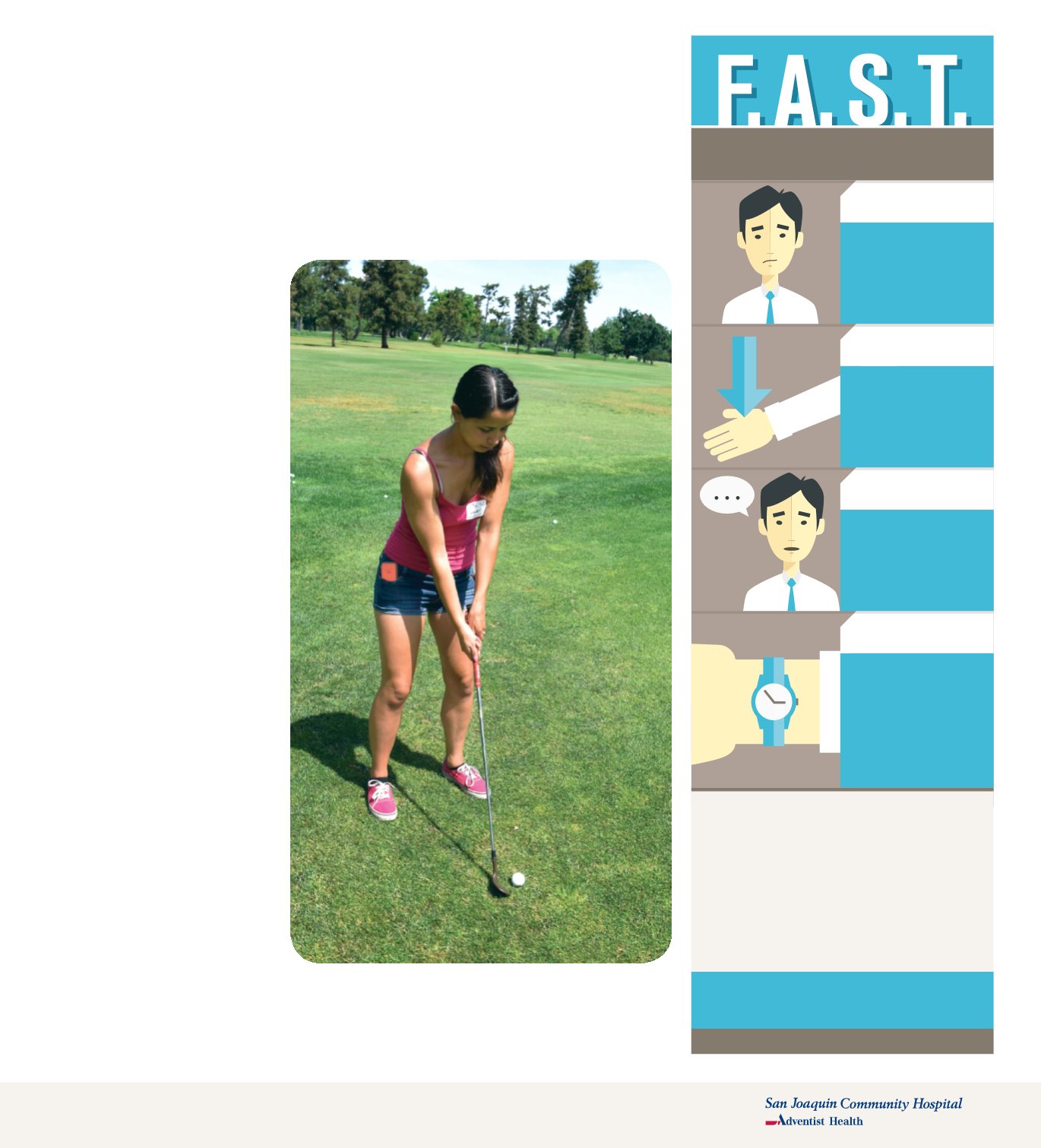

7
Janet’s story
YOUNG, TOUGH AND A
SURVIVOR
It was
the day
before her 21st
birthday when Janet Bautista had a
stroke.
Janet was at home when her
father noticed one side of her face
was drooping. She seemed con-
fused, and she was pacing with no
clear destination.
Her dad called 911, and para-
medics rushed her to Kern Medical
Center. When she arrived, Kern’s
emergency team didn’t take her off
the ambulance. Instead, they sent
her to San Joaquin Community Hos-
pital (SJCH) to receive the advanced
stroke care they knew she needed.
Just where she needed to be
At SJCH, Janet received a clot-
busting treatment called tissue
plasminogen activator, or tPA. This
medicine is time-sensitive—so
it’s good that Janet’s father acted
quickly. To help, tPA must be given
within 4.5 hours or less of the onset
of symptoms, depending on the
case, according to the American
Stroke Association.
Physicians must quickly evaluate
stroke patients to determine if they
can receive time-sensitive treat-
ments such as tPA, to help save
brain function and reduce disability.
Janet has since celebrated her
22nd birthday. “San Joaquin Com-
munity Hospital saved my life,”
she says. “I’m still recovering, but
everyone is so supportive.”
Back in the swing of things:
Janet Bautista was eager to participate in the 2015 Saving Strokes event.
This annual event brings stroke survivors together. They’re paired with golf coaches to work on agility,
balance and coordination. San Joaquin Community Hospital (SJCH) was a sponsor of this annual event,
which was held at Stockdale Country Club.
AN EASY WAY TO REMEMBER
THE SUDDEN SIGNS OF STROKE
Call 911—so you can get to San Joaquin
Community Hospital as quickly as possible.
OTHER STROKE SIGNS
Sudden numbness or weakness of a leg.
Sudden confusion or trouble understanding.
Sudden trouble seeing in one or both eyes.
Sudden trouble walking, dizziness, or loss
of balance or coordination.
Sudden severe headache with no known cause.
Does one side of
the face droop? Is
it numb? Can they
smile? Is the smile
uneven?
Is one arm weak
or numb? Ask the
person to raise both
arms. Does one arm
drift downward?
Can they correctly
repeat a simple
sentence? Is it
slurred or hard to
understand?
Call 911 immediately,
even if the signs go
away. Note the time
when the first signs
appeared. It will
help with treatment
options.
Source: American Stroke Association
FACE
ARM
SPEECH
TIME

















